Sea Kayaking
All posts
Leader Spotlight: Bill Coady
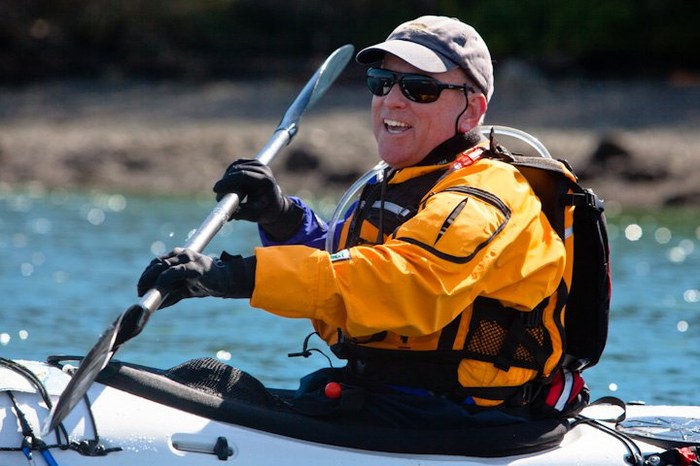
For our Leader Spotlight this month we talked to Bill Coady, a volunteer leader with the Everett Branch who encourages others to lead because he enjoys helping other similarly-minded outdoor enthusiasts ... and because he loves it! Read more…
Top 5 Trip Reports - September 2018
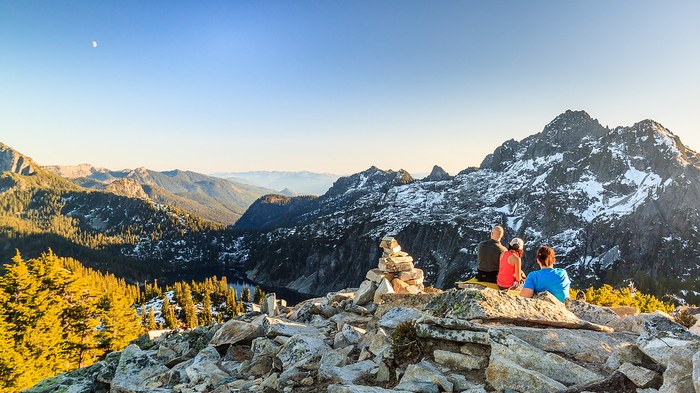
Fall is here, which means lots of transitions between t-shirts and raincoats - don't forget your layers, folks! Although our Washington weather can be fickle at this time of year, when you get a crisp autumn day perfect for an outdoor adventure, it's well worth it. We hope you're able to get out there and enjoy the season before it's time to start strapping on skis, snowshoes, and snowboards. Read more…
Leader Spotlight: Henry Romer
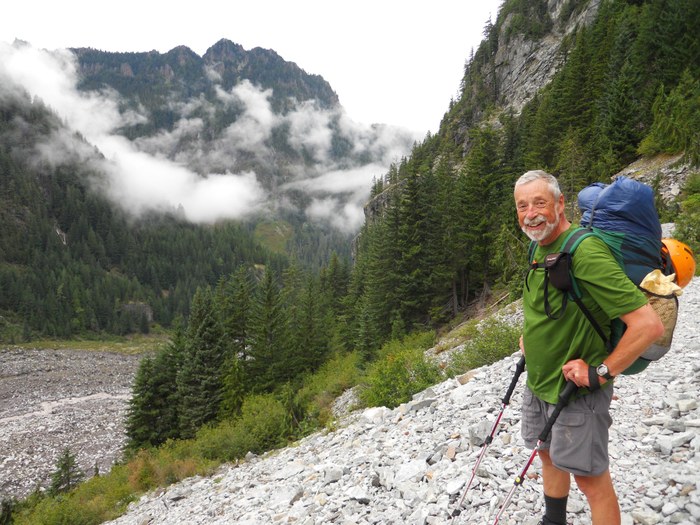
For our Leader Spotlight this month we talked to Henry Romer, a volunteer leader and instructor with the Olympia Branch who leads for multiple activities and encourages new leaders to take advantage of the wealth of knowledge available within our Mountaineers community! Read more…
Leadership on the Water: An Interview with Tom Unger
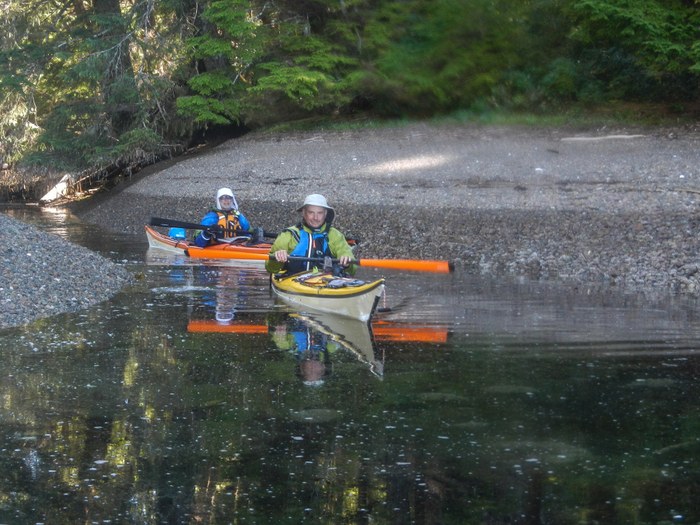
Tom Unger has been hiking, climbing, skiing, paddling, and sailing up and down the west coast for 25 years. He’s widely praised by students and participants for his outstanding communications, group facilitation, instruction, and collaborative leadership. In the summer of 2017, Tom led a two-week trip with The Mountaineers around Cape Scott with Barney Bernhard, Esther Ladwig, Marty Mayock, Charlie Michel, and Karen Cramer. In this interview, Tom discusses how he intentionally brought his group together around common goals, expectations, and trip styles. Read more…
Top 10 Trip Reports - July 2018
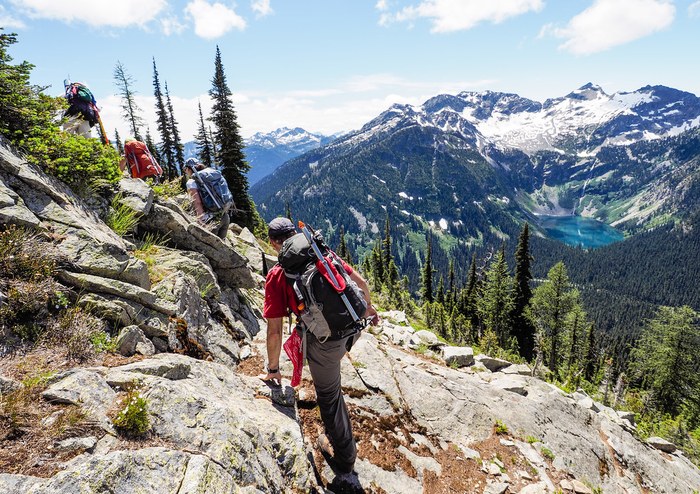
Picking the best 10 trip reports from an entire month of Mountaineers activities and courses isn't easy. Especially when that month is July. Mountaineers are out adventuring, and seemingly, only pause between trips when it's time to report on them. Read more…
Why Developing a Routine Could be Your Most Important Water Safety Precaution
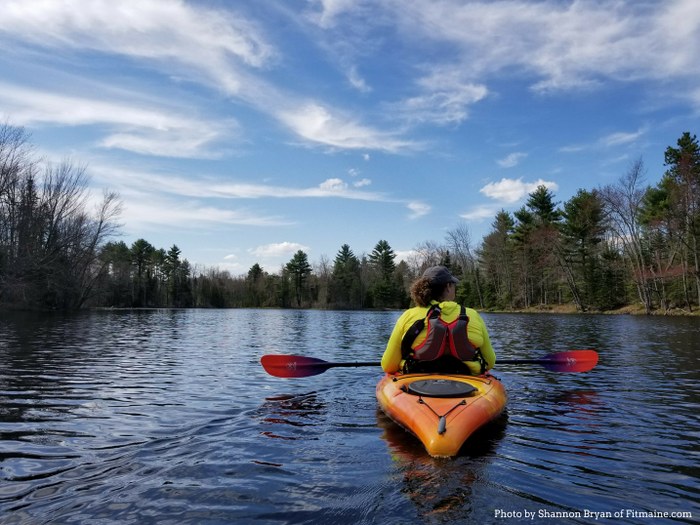
I have been a recreational kayaker for twenty five years and paddle often. I kayak on slow moving rivers, ponds, lakes, and protected salt water coves. I continue to improve my skills as I gain even more experience and become involved with various paddling communities. I have learned that most of what you can do to stay safe while paddling happens off the water. Read more…
The Communications Devices We Carry
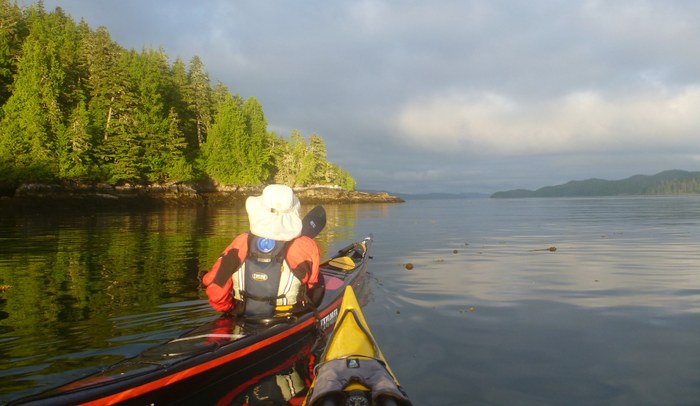
On June 24, I will be leaving home - along with a group of three other Mountaineers sea kayakers - to paddle down the west coast of Vancouver Island. Our plan is to take three weeks, starting in Winter Harbor and ending in Tofino, paddling a distance of over 200 nautical miles of exposed and remote outer coastline. As a part of our safety plan, we've included electronic signaling devices which we can use to call for emergency help. This blog describes the various options that I considered for our trip, an overview of what we decided to bring, and how we will use these devices throughout our journey. Read more…
2018 Updates to the Sea Kayaking Minimum Standards
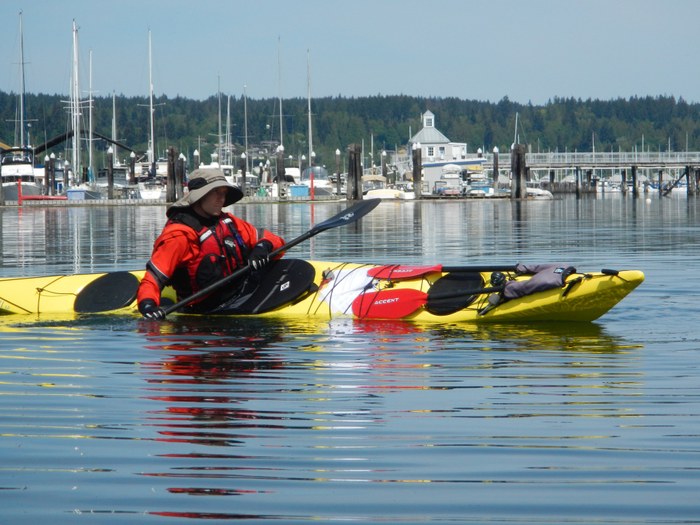
As a part of their annual review process, members from each of The Mountaineers sea kayaking committees met in Tacoma on February 10 for the 2018 Sea Kayaking Summit. During this meeting, the group discussed a wide variety of topics, including ways to make The Mountaineers sea kayaking programs more accessible and consistent. Read more…
VHF Radios and Safety 101 for Sea Kayakers
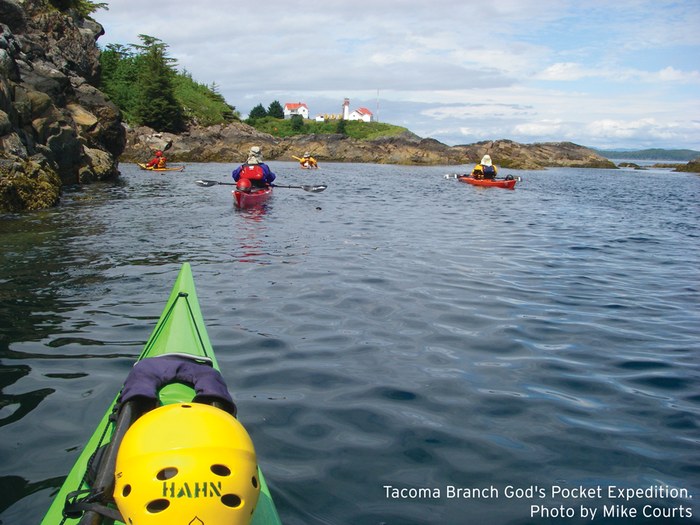
A group of six of us set off from the north shore of the mouth of Willapa Bay. The tide was coming in, but was going to turn around noon and the swell outside was about six feet. We intended to cross over to Leadbetter Point, enjoy the beach there for lunch and then return in the afternoon. We had four people with lots of experience in coastal paddling (surf conditions) and two with much less experience but were strong paddlers. Read more…
2018 Olympia Sea Kayaking Program
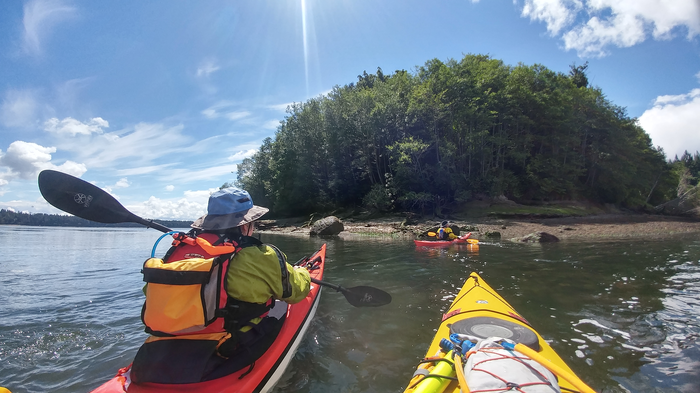
The Olympia Sea Kayaking Committee is launching our 2018 sea kayaking program with trip planning, instructor training, incident management training, Wednesday evening paddles, and a new group of sea kayak students. Join us for another season of fun on the water! Read more…
Kayaking Cape Scott: A Leader's Perspective - Feb 28
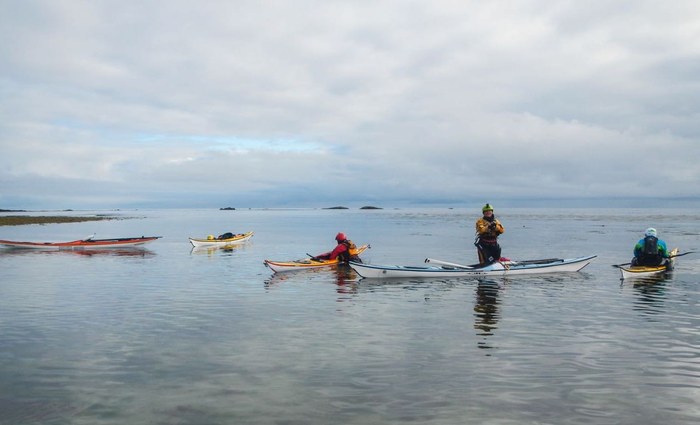
A year ago, I had the notion to lead a group of Mountaineers sea kayakers on a difficult trip around the northwest corner of Vancouver Island. This is a classic trip because the launch point (Port Hardy) and the landing point (Coal Harbor) are separated by only 20 minutes of driving - and 100 miles of remote, beautiful coastline. It is a thru paddle with a very easy shuttle. But the paddling is mostly open coast, much of which is exposed to ocean swell with surf on the beaches. It's an advanced paddle and it takes two weeks. So, I wondered: How will I find a group of capable and compatible kayakers? Read more…
Sea Kayaking the World with Justine Curgenven - Jan 22
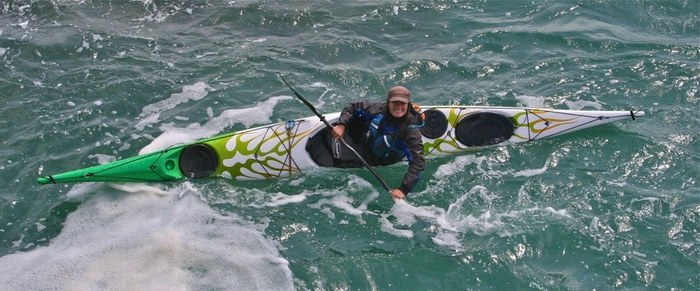
Pull up a chair, settle in, and enjoy stories and video from award winning filmmaker Justine Curgenven. With 15 years of sea kayaking adventures spanning six continents, Justine's hair-raising experiences appeal to anyone with an adventurous spirit ... be they climbers, skiers, sailors, or kayakers themselves! Read more…
What is Progressive Outdoor Education?
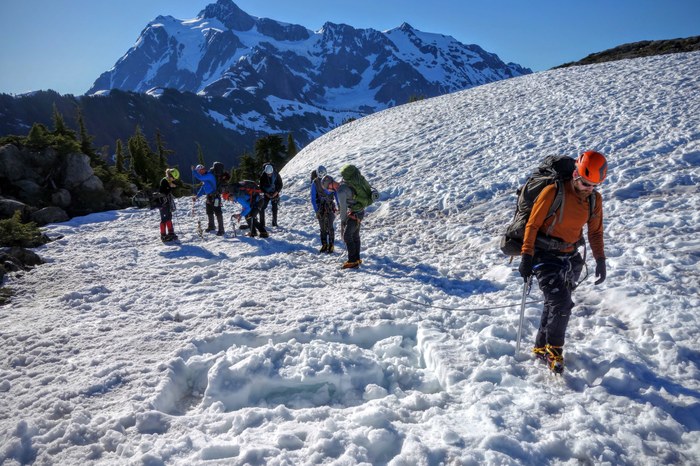
The Mountaineers 'Vision 2022' Strategic Plan calls for us to invest in being “innovative leaders in outdoor education.” This means we need to respond to growing needs and address new century challenges in ways that are different from traditional outdoor education. This includes investment in our volunteers – the greatest source of innovation and a priceless resource that is uniquely Mountaineers. We call this new approach "Progressive Outdoor Education." Read more…
Did You Know? Hope Island State Park
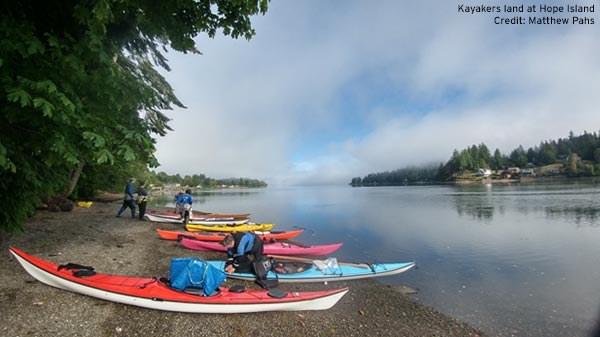
Hope Island State Park is a 106-acre marine camping park in Mason County on the Puget Sound. This island is not only a state park, but also part of the expansive Cascadia Marine Trail that extends all the way north to the San Juan Islands. This quiet island can only be reached by boat. It is covered with old growth forests, saltwater marshes, and a two mile long beach. With the proper training and equipment, it makes for a great adventure! Read more…
Leader Spotlight: Charlie Michel
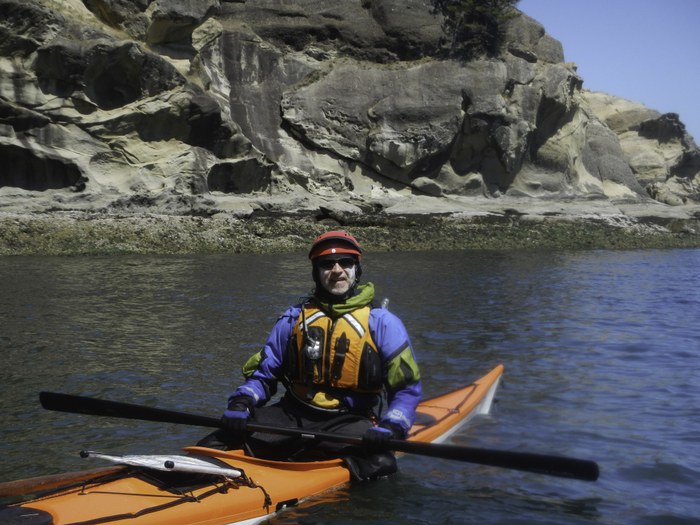
For our Leader Spotlight this month we talked to Charlie Michel, a Sea Kayak Leader who can still hold his own with the young guns. Read more…
Youth Kayak Programs in July and August
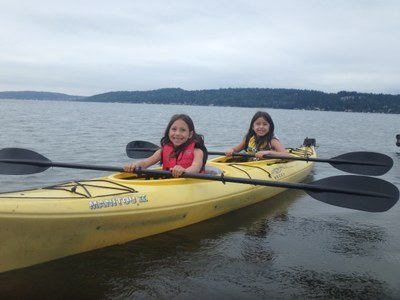
Want to get your kids out on the water this summer? Sign up for our new kayak program for kids aged 7-13. The program is designed with fun and water safety as the primary goals. Read more…
How To: Implement Low-Impact Recreation Skills
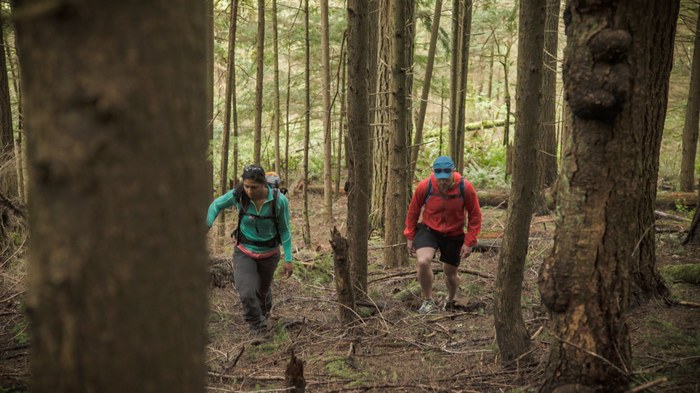
At The Mountaineers, we've believe venturing into the outdoors is an essential piece of the human experience. It's important to implement low-impact recreation skills to keep our wild places as sanctuaries for the human spirit. Read more…
How To: Reduce Your Backcountry Bathroom Use Impact
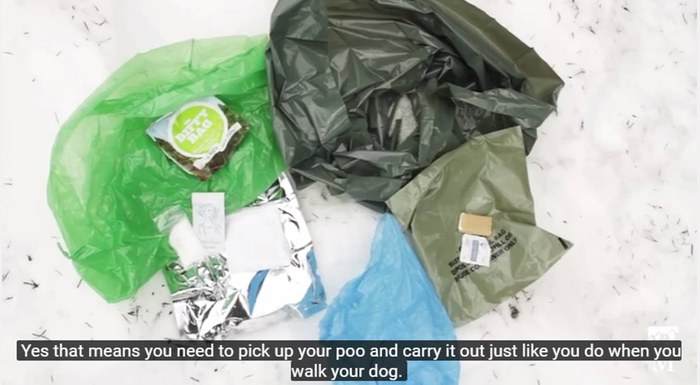
At The Mountaineers, we've believe venturing into the outdoors is an essential piece of the human experience. It's important to implement low-impact recreation skills to keep our wild places as sanctuaries for the human spirit. Read more…
How To: Reduce Your Backcountry Camping Impact
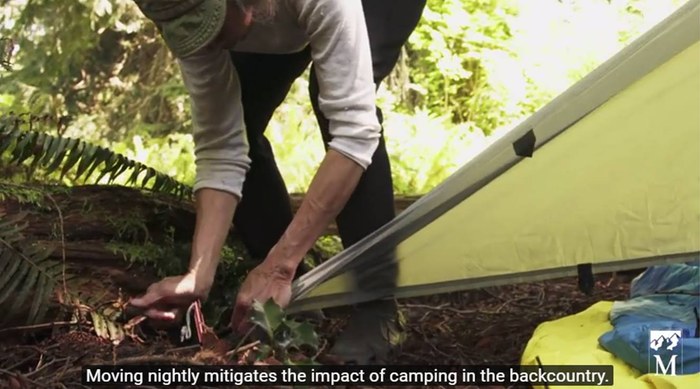
At The Mountaineers, we've believe venturing into the outdoors is an essential piece of the human experience. It's important to implement low-impact recreation skills to keep our wild places as sanctuaries for the human spirit. Read more…
How To: Reduce Your Backcountry Eating Impact
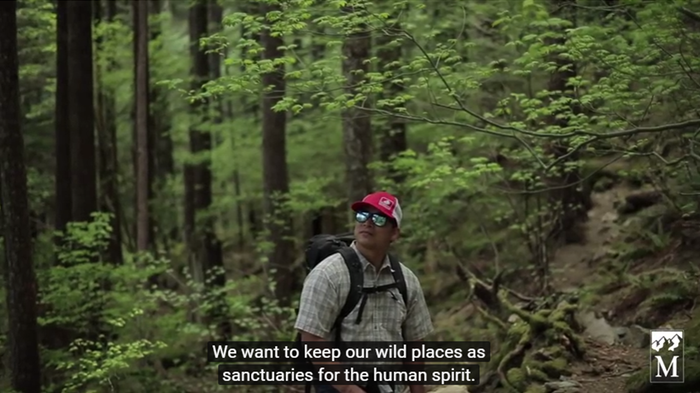
At The Mountaineers, we've believe venturing into the outdoors is an essential piece of the human experience. It's important to implement low-impact recreation skills to keep our wild places as sanctuaries for the human spirit. Read more…
How To: Reduce Your Backcountry Travel Impact
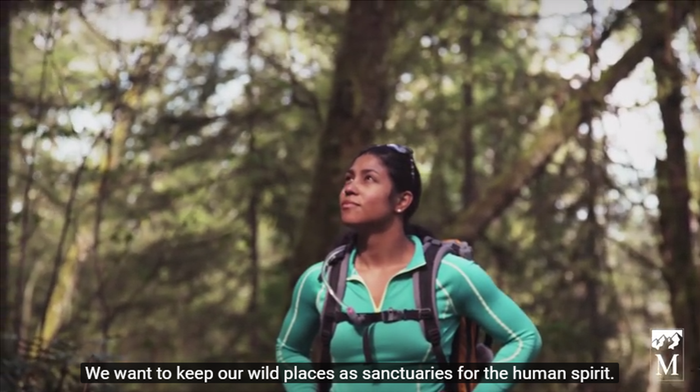
At The Mountaineers, we've believe venturing into the outdoors is an essential piece of the human experience. It's important to implement low-impact recreation skills to keep our wild places as sanctuaries for the human spirit. Read more…
Paddler's Development Weekend - September 23-25, 2016
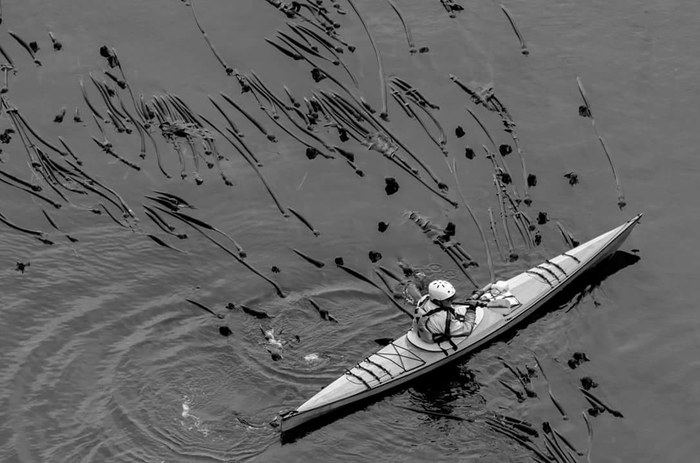
Each year, Mountaineers kayakers come together to attend the advanced clinics sponsored by the Seattle Kayaking Committee at Deception Pass. Staying at the Environmental Learning Center at Cornet Bay, Mountaineers paddlers attend two full days of clinics that teach skills such as advanced paddle strokes, incident management, on-the-water navigation, introduction to moving and dynamic waters, and more! Being so close to the waters of Deception Pass for an entire weekend allows time for paddlers to spend more time learning skills and to connect with each other. Read more…
How To: Prevent and Treat Heat Related Illness
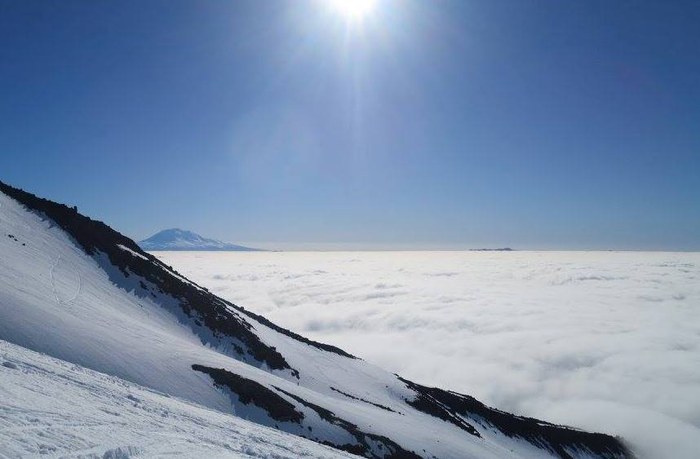
June was an interesting month in the mountains. We had “June-uary” conditions, giving us lots of new snow, rain, and wind. We also had scorchingly high temperatures with places like Leavenworth and Vantage reaching close to 100°F. As we progress through the summer, we need to be mindful of the dangers on these hot, sunny days - even if we are out on snow or a glacier. Read more…
Be An Outdoor Ambassador: How To Implement Low-Impact Recreation Skills
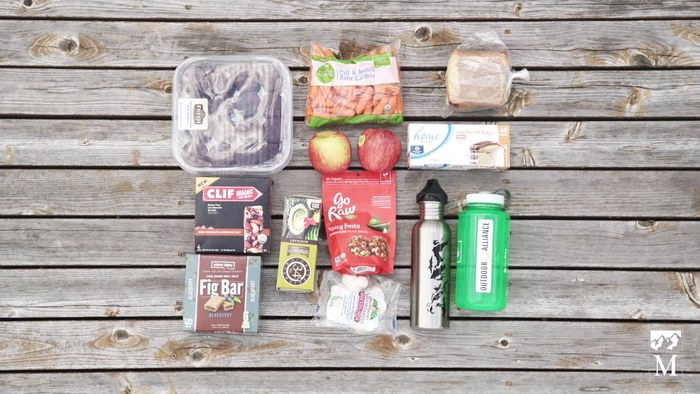
At The Mountaineers, we've believe venturing into the outdoors is an essential piece of the human experience. We go outside to wander and explore the adventurous spirit within ourselves. It's important to implement low-impact recreation skills to keep our wild places as sanctuaries for the human spirit; so our grandchildren can experience the sensation of discovering an untouched place. Read more…
Sea Kayaking Summit Results In Updated Minimum Standards
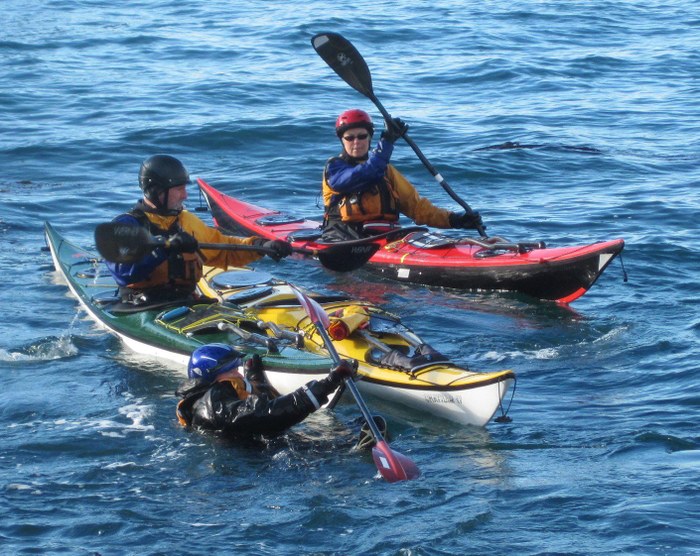
These changes now apply to all Sea Kayaking activities at every branch. Read more…
How To: Manage the Risks of River/Creek Crossings
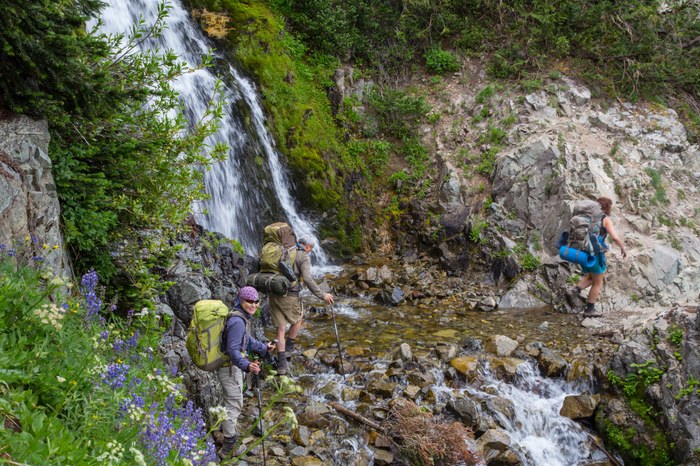
As the weather gets warmer and winter snow melts away, more of us are heading outside. And as the snow melts, it leaves us with a sometimes a challenging obstacle: water. In the Cascades, it doesn't matter if you are a hiker, scrambler, or climber, eventually you'll have to deal with a water crossing. It could be a small trickle or a rushing river. It's not a matter of if, but when, you'll encounter this obstacle.
This article was updated in May 2018.
Historical Perspective
A few years ago, a Mountaineers group was headed to climb Sahale Peak. The team was crossing a small drainage in the area between Midas and Morning Star Creek - two of the main creeks that flow out of the Quien Sabe Glacier below Sahale - when one of the climbers slipped and hit her face on the rock in the creek. This caused a small laceration, just under the right eye, and swelling around the area, as well as a headache, slight dizziness, and swelling. The trip leader decided to cancel the climb and turn around at this time. The group headed back to the cars and the injured climber was taken to the hospital for medical evaluation. Luckily, she sustained no fractures or head injury, but she did have a nasty black eye.
This incident shows how something seemingly simple, like crossing a small trickle of water, can be detrimental to the success of a trip.
Avoiding Hazards
Many different hazards are involved in water crossings: slippery, moss covered rocks, swift currents, soggy boots, and cold feet. If you do fall in, you have soaked clothing and gear, the risk of hypothermia, potential projectiles in the water like logs and boulders, and much more.
Here are some tips to reduce your chances of ending up soaked and needing to cancel the rest of your trip:
- Never try to cross a major stream if you are alone. It only takes 2" of water to drown. The climber in the incident above could have easily been knocked unconscious, and if there was no one to help her up, it could have been a different outcome.
- Quickly search both upstream and downstream for a way to cross without having to ford the water. Look for downed logs, closely spaced stones and boulders, or narrow points in the waterway. Be sure to keep in mind the ability and experience levels of everyone in your group.
If you find possible logs or stepping stones, consider:
- Will it hold you? If you are considering a log, is it strong enough to hold your weight as you cross, or is it rotten and will break once you are half-way out? Is it wide enough to get good foot placements? Are there branches sticking up in your way? If you are considering stones, are they sturdy and solid, or are they going to shift under your weight and dump you in the water?
- What is the surface like? Does that log have rough, textured bark that will give you good traction, or is the bark peeled away showing damp, slick hardwood? If you are unsure of the footing, but the log seems strong enough, one alternative is to butt-scooch along the log. Are those stepping stones covered in slick moss, or do they have good texture?
- Be particularly cautious of log jams. They might seem like a solid option, but the logs can easily shift and throw you off balance and into the water. Now you are in even bigger danger of getting caught underwater by one of the logs.
Regardless of how you have to cross - whether it be logs, stepping stones, or just fording the water - take a minute to look downstream of your crossing point and examine the hazards you could encounter if you fall in. Is there a large waterfall you could get swept over? Maybe a downed tree or log jam that you could get caught in or some large boulders you could hit. If anything like this poses a danger, re-evaluate your crossing point.
Picking the best spot
If your only option is to ford the water, follow these steps:
- Look for the shallowest, slowest running section. This is usually also a wider section of the waterway.
- Assess the water's speed by tossing in sticks, leaves, or grass into the water. If there is debris actively floating down the water (evidence of flooding) or the sound of tumbling rocks can be heard underwater (evidence of fast-moving water), the crossing should be abandoned.
- Keep in mind the the physical stature of other people in your group. Two feet of water could be less than knee-deep if you are 6'6" tall. But it could be mid-thigh deep for someone under 5' tall, and that makes it much more challenging.
- Look at the bank on the other side. Avoid steep banks as this not only indicates a challenge exiting the water, but that steepness could continue dramatically down and create a deep hole with fast-moving water.
- If possible, plan to cross early in the morning. Many of the waterways in the Cascades are directly fed by snow-melt. After a cool night, there won't be as much melting and the water level will be lower. On the flipside, after a long, hot summer day (or even a warm spring rain) there will have been a lot of melting and all that water will be rushing through the streams at a higher overall level that afternoon, making them both deeper and faster flowing.
Staying Dry & Avoiding Injuries
Once you've chosen your place to ford the water, follow these tips to stay dry and avoid injuries:
- If you have sandals with an ankle strap (like Chacos or Tevas) change into those. Avoid flip-flops as the loose heels can get caught in the current and make you lose your balance.
- If you don't have alternate footwear, at least take your socks off and put your bare feet back in your boots. That way, you can put your dry socks back on after crossing and they can start to absorb some of that water in your boots.
- Do not cross in just your bare feet. Unknown hazards in the water, like sharp sticks, rocks, possibly even fishhooks, could injure you. Your bare feet are a poor substitute for the traction provided by the soles of your boots.
- Take off extra layers and pack them in the most water-proof thing you have. I always carry one or two extra heavy-duty trashbags in my pack. Take that warm puffy off and wrap it up the best you can. You'll want it once you get to the other side! Roll up your pant-legs, or ditch your pants altogether.
- Undo your waist-belt and sternum straps on your backpack and loosen your shoulder straps. If you do fall in, this will allow you to easily get your pack off.
Crossing Methods
- If you are crossing the water one at a time, use your trekking poles, ice axe, or downed tree limbs for stabilization.
- Cautiously enter the water and face upstream. If you only have one pole or limb to help you, hold it with both hands in front of you (upstream) to form a tripod with it and your legs. Lean on the pole as third leg as you shuffle-step across, keeping two points of contact at all times. If you have two poles or limbs, you can use the one in your leading hand to probe along the way and feel for submerged obstacles or hidden holes.
- Another method is to cross as a group using the "mutual support method." There are two options for this - in the first option, everyone should face upstream and hold on to the shoulders or backpack of the person in front of them (front person can have a pole or limb). As a group, shuffle step across the water, using each other for support and stability.
- Another option is for everyone to face the opposite bank and move together as a unit. In this method, keep the waist-belt of your backpack buckled. Insert your arms between your neighbors' back and their pack, and grab their waist-belt on the opposite hip. In both scenarios, the most upstream person should be strong, then the second person should be the strongest and/or most experienced. The person on the other end should also be strong, and then all other members sandwiched in the middle. End people can also have poles for extra stability. Don't break formation until everyone is out of the water.
Regardless of which method you use, don't fight the current or try to go straight across the water. Instead, with each step move diagonally downstream as you make your way across.
If you do fall in, try to stand back up as quick as possible before your backpack gets too waterlogged. If you are swept downstream, get out of your pack but try to keep hold of it and use it for flotation. Try to position yourself face up with your feet downstream of you. Only try to stand up once you can touch the bottom in shallow water. Editor's Note: Be aware of the dangers of foot entrapment anytime you stand up in moving water.
Once you've made it across, wring out your damp clothes and use a pack towel to dry off as much as you can. If available, switch into dry clothes. Put on an extra insulating layer to help keep in what little body heat you have. Pop a quick bite of food in your mouth and start hiking to generate some more warmth.
Take every water crossing seriously. Always ask yourself, "Do we need to cross? Where do we cross? How do we cross?" Even with all of these tips, be sure to keep in mind that if there is any doubt, not crossing at all is the best option.
How to: Reduce a Dislocated Shoulder
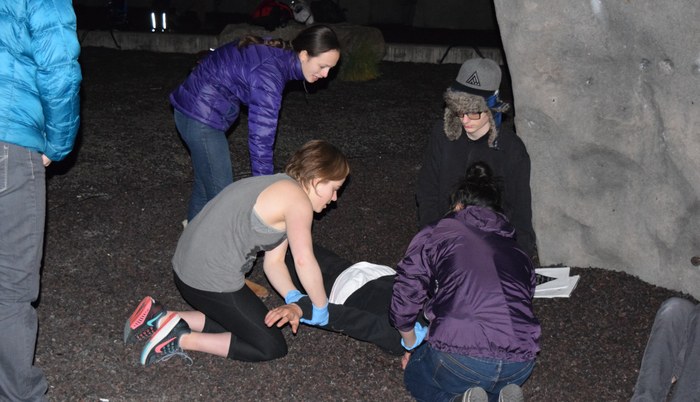
As I skimmed through the latest Annual Safety Report looking for ideas for this month's article, I noticed The Mountaineers had 5 instances of dislocated shoulders in 2014. This got me thinking about all of my friends who have had shoulder dislocations while out in the backcountry. Read more…
Tacoma Branch Open House + Gear Grab - Feb 18
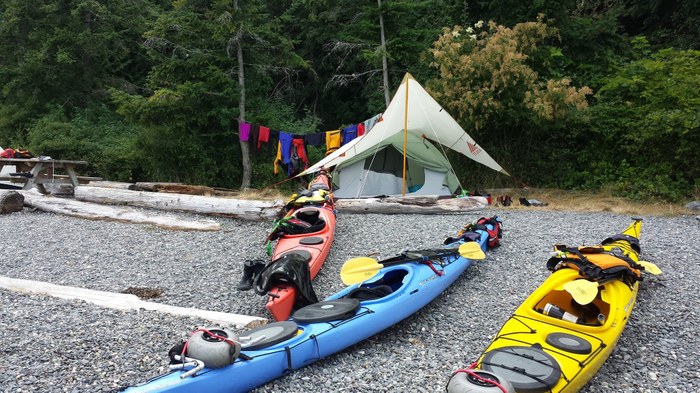
At this action-packed evening, you can check our our Gear Grab, meet fellow Mountaineers and learn how to get involved in our courses and activities, and enjoy great stories and pictures from Tacoma Mountaineer Beth Owen on her 8-day kayak adventure around the beautiful San Juan Islands. Read more…
Paddler's Development Weekend - 2015
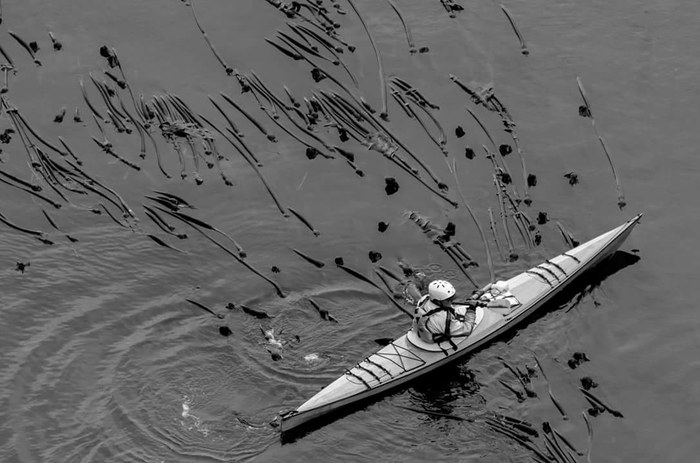
Each year, Mountaineers kayakers come together to attend the advanced clinics sponsored by the Seattle Kayaking Committee at Deception Pass. Staying at the Environmental Learning Center at Cornet Bay, Mountaineers paddlers attend two full days of clinics that teach skills such as advanced paddle strokes, incident management, on-the-water navigation, introduction to moving and dynamic waters, and more! Being so close to the waters of Deception Pass for an entire weekend allows time for paddlers to spend more time learning skills and to connect with each other. Read more…
2015 Updates to the Sea Kayaking Minimum Standards
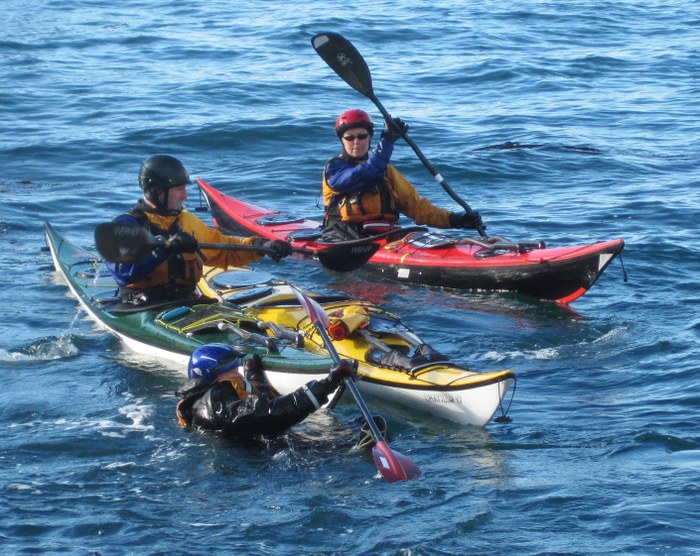
These changes now apply to all Sea Kayaking activities at every branch. Read more…